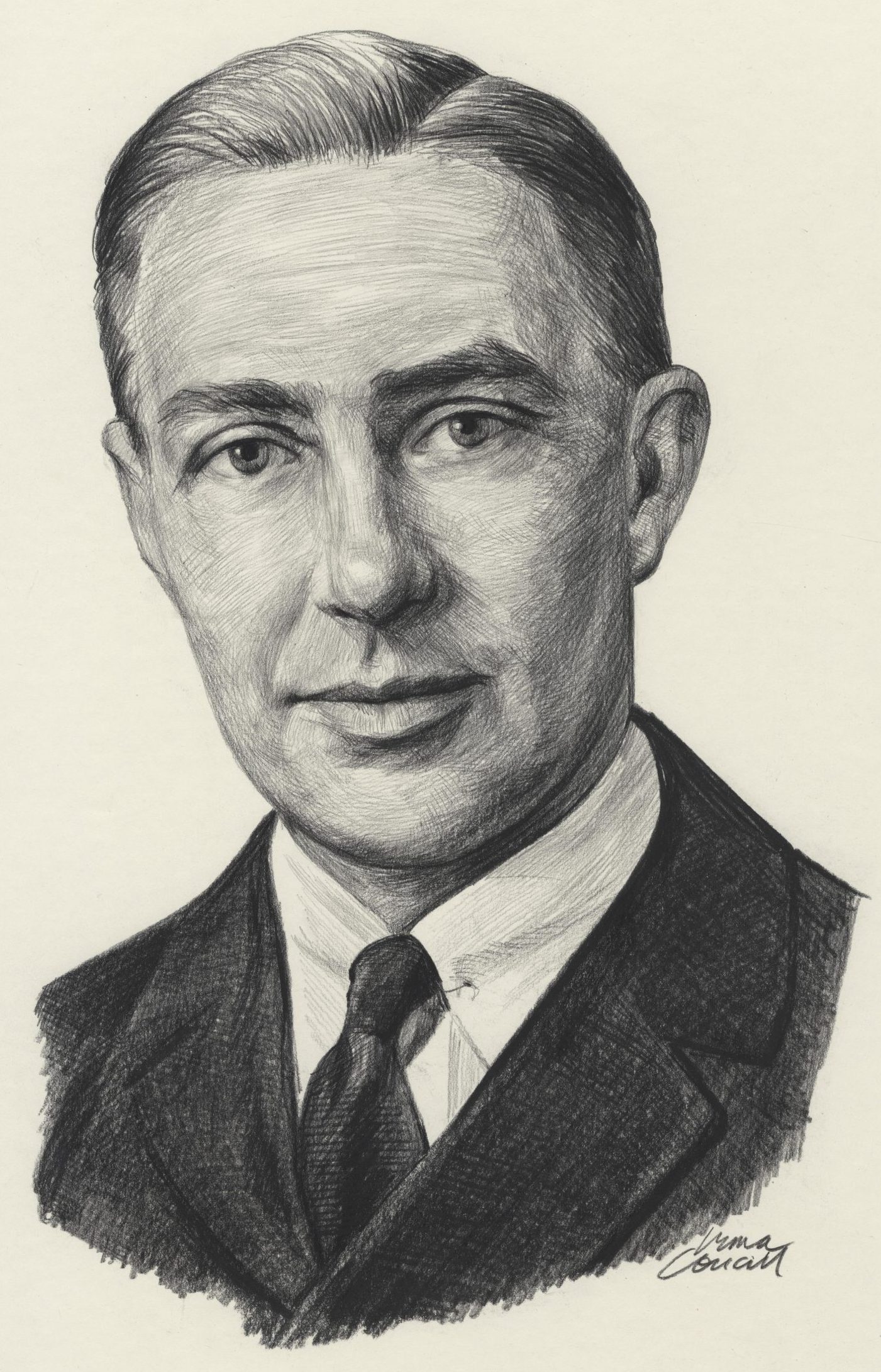John Henry Tudhope

Nickname: Tuddy
Birth Date: April 17, 1891
Birthplace: Johannesburg, South Africa
Death Date: October 12, 1956
Year Inducted: 1974
Awards: MC*; The McKee Trophy
His pioneer flights to establish an airmail service to and from trans-Atlantic Ocean liners and his aerial survey work in designing initial flight routes for Trans-Canada Airlines, have been of outstanding benefit to Canadian aviation
Family-Owned Diamond Mine
John Henry 'Tuddy' Tudhope, M.C.*, was born in Johannesburg, South Africa, on April 17, 1891. He was educated there at St. John's College, and at Tonbridge, Kent, England, where he completed his schooling before returning to South Africa as an engineer in the family-run diamond mine and to oversee the family farm.
The British Army
At the outbreak of World War I, Tudhope enlisted in the British Army as a trooper to serve in German Southwest Africa. In 1917 he transferred to the Royal Flying Corps (RFC), and earned his pilot's wings. He flew as a fighter pilot with No. 40 Squadron, RFC, and was awarded the Military Cross (M.C.) and Bar for destroying 15 enemy aircraft in combat. At war's end he retired from the Royal Air Force (RAF) with the rank of Major and immigrated to Canada to farm at Lumby, near Vernon, British Columbia.
Canadian Promotions
In 1920 Tudhope joined the Canadian Air Force (CAF) and served as a flying instructor at Camp Borden, Ontario.
The Vancouver Air Station, established in 1920, was known for its training of homing pigeons. Squadron Leader JH Tudhope supported the use of these birds to carry SOS messages back to base. Many pigeons were carried by pilots of flying boats along the British Columbia coast. In the event the aircraft was forced down, the pilot attached a message to the bird's leg and released it to find its way home. They had been used in World War I and were credited with saving many lives. F/L R Leckie used pigeons when he put his H-12 flying boat down in the North Sea in 1917 in order to save the crew of a DH-4. One bird reached its base and Leckie's message led to the rescue of the fliers. In 1923, S/L AE Godfrey, who took over command of the Air Station a year previously, proved the pigeon's worth when he was forced down at sea. He was picked up by a station motorboat a short time after dispatching the pigeon.
In 1923, he was promoted to Squadron Leader and given command of the Dartmouth, Nova Scotia Air Station, followed by command of the Vancouver, British Columbia Air Station when the Royal Canadian Air Force (RCAF) was formed in 1924.
Airmail
At Air Headquarters at Ottawa, Ontario, in 1927, he became Superintendent of Airways with the Department of National Defence. One of his first tasks was to make preliminary flights for the development of an airmail service. One plan was to speed the delivery of mail coming from, or going to, Europe by having aircraft connect with trans-Atlantic Ocean liners docking at Rimouski, Quebec, to transfer mail to and from inland areas of Canada. Tudhope made the first experimental flight in September 1927, using a Vickers Vanessa seaplane, and although a storm damaged his aircraft on this trip, he went on to make many flights to meet incoming and outgoing steamships.
A Trans-Canada Airway
In 1928 plans were made under the Controller of Civil Aviation, J.A. Wilson, for the survey and construction of airports across Canada for a trans-Canada airway. Many of the larger centres across Canada already had landing strips, developed when the government decided to assist the flying clubs in 1927. Landing strips were needed between these airports. Selection of sites for western Canada was done by A.D. 'Dan' McLean, while selection of sites from Winnipeg to Halifax was done by Tudhope and others. To accomplish the task of charting the most suitable routes, they travelled by air, rail and on foot. The Trans-Canada (McKee) Trophy for 1930 was awarded to Tudhope for conducting the early, experimental airmail flights from Rimouski, Quebec, and for his supervision of the prairie airmail service in 1930.
The Department of Transport
In October 1931, Tudhope became Inspector of Airways, and continued the task of selecting sites for aerodromes. He was seconded from the RCAF in November 1936 to continue serving civil aviation under the newly formed Department of Transport (DOT). In 1937 he was in charge of the calibration of radio ranges from Winnipeg to Vancouver in preparation for the trans-Canada air services.
Tudhope piloted the Department of Transport's Lockheed 12A Electra in which government officials, including the Rt. Hon. C.D. Howe, made the first pre-inaugural inspection flight over the route Trans-Canada Airlines would use from Montreal to Vancouver. This flight, on July 30, 1937, was known as the "Dawn to Dusk" flight.
Other Appointments
He retired from the RCAF in 1938 and became Vice-President of Canadian Aviation Insurance Managers Limited.
In 1943 he became General Manager of Operations for TCA. Five years later he was appointed the first Civil Air and Communications Attache to the High Commissioner at London, England.
Tudhope died there on October 12, 1956, and his ashes were scattered over the Rocky Mountains from the same aircraft he had commanded in 1937 on the TCA inspection flight. The ceremony was conducted jointly by the RCAF and the Department of Transport.
John Henry 'Tuddy' Tudhope was inducted as a Member of Canada's Aviation Hall of Fame in 1974 at a ceremony held in Edmonton, Alberta.
To return to the Inductee Page, please click here.
